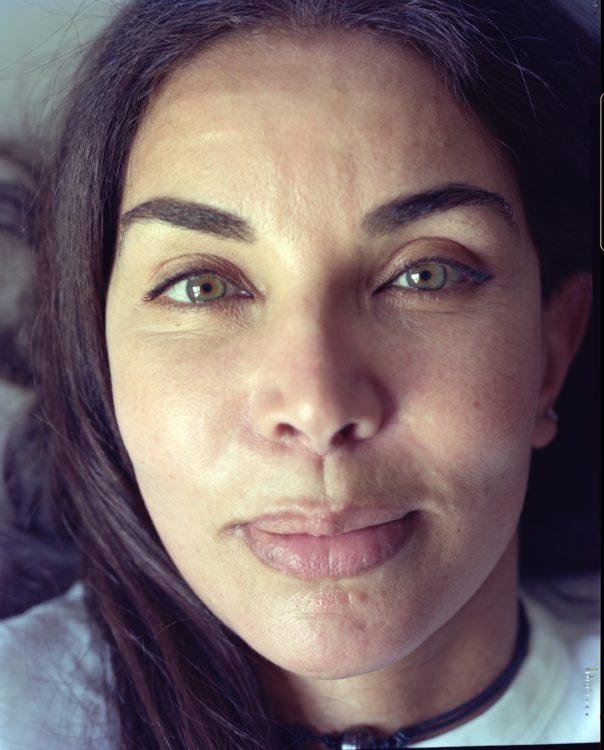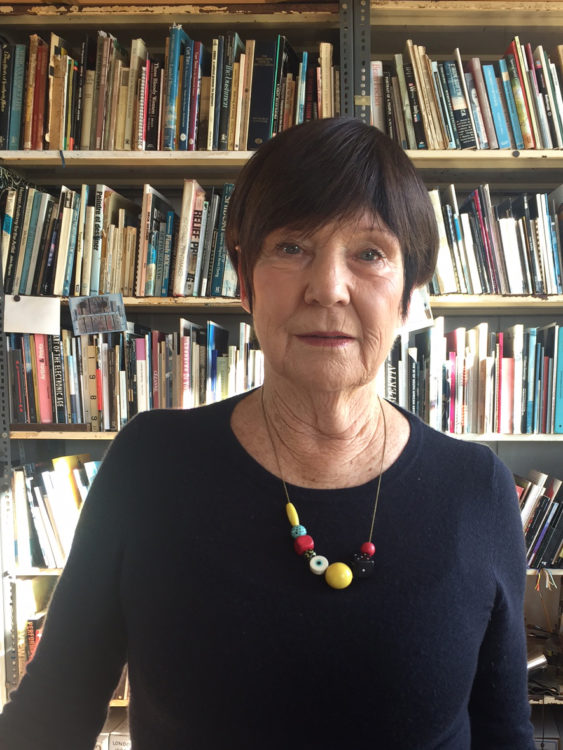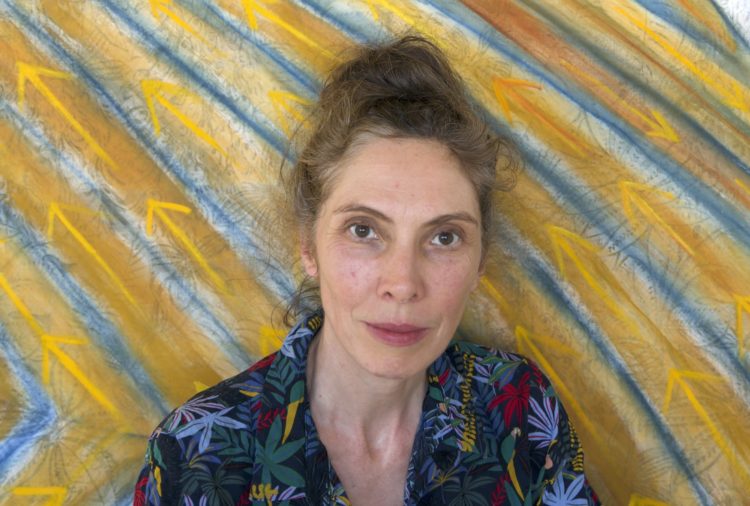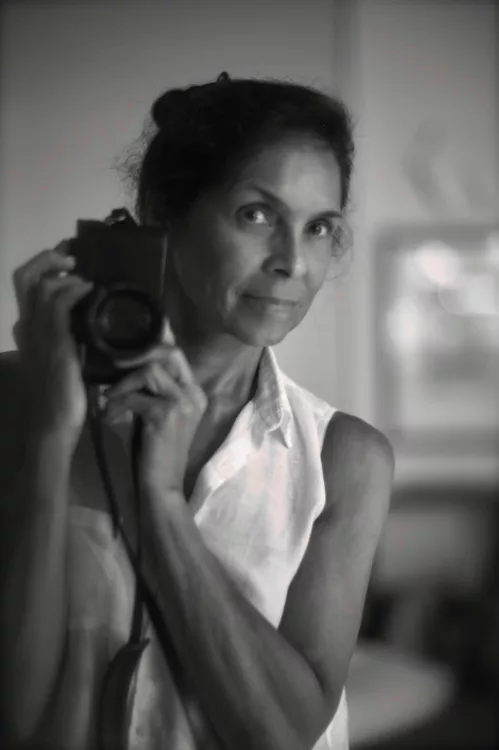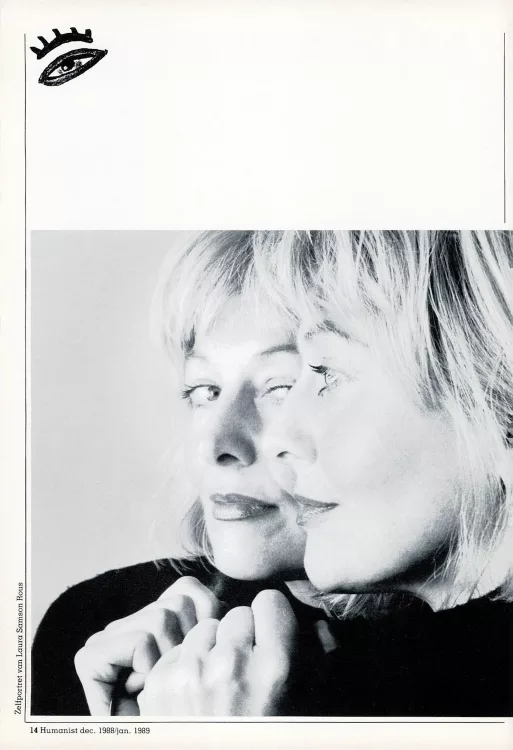Review
The Fondation Cartier is presenting a retrospective of photographer and activist Claudia Andujar (born in 1931), who for some fifty years, has been engaged with the Yanomami Amerindian people living at the border of Brazil and Venezuela.
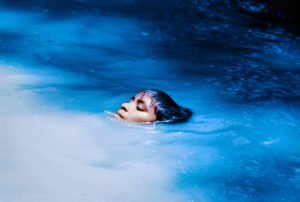
Claudia Andujar, The young Susi Korihana thëri swimming, Catrimani, Roraima, 1972-1974, infrared film, Courtesy Fondation Cartier, © Claudia Andujar
Due to architectural constraints, the exhibition design on the ground floor of the Fondation Cartier usually requires a majority of the works to be suspended in space. In this particular case, the sense of floating during the visit contributes to the reading of the show as an immersion in a series of images that seek to re-qualify the experience of the gaze by embracing the point of view of the Yanomami.

Claudia Andujar, Inside a collective house near the Catrimani River, Roraima, 1974, Courtesy Fondation Cartier, © Claudia Andujar
After moving to Brazil in 1955, C. Andujar began working in photography and producing images already marked by the presence of marginalized subjects (including several Latin American indigenous groups). In 1971 she met the Yanomami while working on a story on the Amazon for the magazine Realidade; she then undertook a monographic work over a longer period of time than photojournalism allowed thanks to a grant from the John Simon Guggenheim Memorial Foundation.
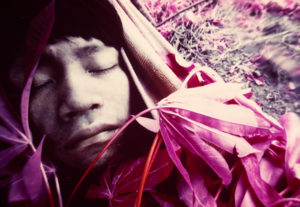
Claudia Andujar, Youth Wakatha u thëri victim of measles, is treated by shamans and paramedics from the Catholic mission, Catrimani, Roraima, 1976, Courtesy Fondation Cartier, © Claudia Andujar
C. Andujar visited the region on numerous occasions until 1977, and realised an important body of work – shown at the beginning of the exhibition – thematically structured around notions of daily life and rituals. Here she brings interesting paradox to light: for the artist, the act of taking a photograph allowed for a horizontality in exchange, while the photographic technique has historically been linked to the colonial enterprise and its taxonomic rampage (and more broadly, its systematic violence in the cultural and sexual fields). Andujar’s work, however, goes against all objectification. It is fascinating to observe her efforts made through the exploitation of photography’s possibilities to enter into conversation with the Yanomami’s conception of the world and their understanding of the shamanic experience. The artist negotiated with the history of the photographic medium, retaining a paradigm that is particularly pictorial and openly experimental; where it is less important to document than to produce an image (using, among other techniques, infrared film, Vaseline on the lens, flash and slow shutter speeds).
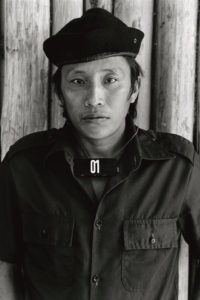
Claudia Andujar, Ericó, Roraima, from Marcados series, 1983, Courtesy Fondation Cartier, © Claudia Andujar
In this, it is not so much a question to determine whether the gamble was successful or not than to note the intention in which C. Andujar operated, heralded by her work as an activist presented in the second part of the exhibition, in a reversal of the previous relationship of subordination between pictorial research and political effectiveness as the living conditions of the Yanomami significantly worsened. The Brazilian government’s plans to open a trans-Amazonian route crossing the Yanomami land coinciding with the discovery of mining resources caused the spread of epidemics, for example, that required a specific response. The series Marcados (1981-1983) depicting people identified by numbers during a vaccination programme – a direct reference to the means employed by the Nazis (from with C. Andujar directly suffered as her father’s family had been deported) – is particularly noteworthy in the strategic echo it offers to the history of the photographic medium. Similarly, and more generally, the Yanomami’s desire to see their images circulated, despite their belief system that valued the contrary, attests to their own reflexivity in the face of this historical inscription and their ability to use it to defend their rights.
Claudia Andujar, The Yanomami Struggle, from 30 January to 10 May 2020 at the Fondation Cartier pour l’Art Contemporain (Paris, France).
Valentin Gleyze, "Claudia Andujar: Photographing As We Struggle." In , . URL : https://awarewomenartists.com/en/magazine/claudia-andujar-photographier-comme-on-lutte/. Accessed 19 January 2026




